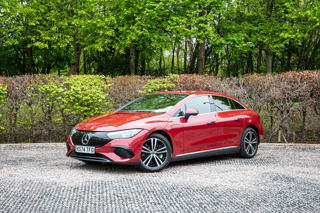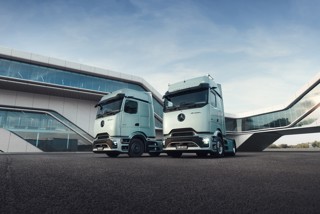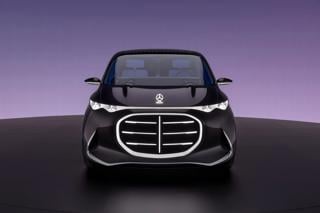With UK sales up by 24%, Dieter Zetsche, head of Mercedes-Benz Cars, is now targeting an autonomous, accident-free future, reports Mark Nichol

A decade as head of Mercedes-Benz passenger cars gives Turkish-born Dieter Zetsche more than just respect within the car industry, or even the business world – in Germany, he’s a celebrity.
That celebrity is of the rare kind these days – the result of venerated achievement and hard-earned education – and his distinctive look has undoubtedly enhanced his fame. The round glasses and dense white moustache give Zetsche the look of a Guess Who? character.
But as board games go he’s probably more of an Operation sort of a man: affectionately known as ‘Dr Z’ inside Mercedes-Benz, he’s credited as the chief surgeon in a healing process that’s seen an ailing carmaker get back on track since a distinct low in the mid-2000s. He has done that by re-focusing the company on its core values of quality, safety and luxury, doing so with meticulous planning and a steady hand.
In 2005, Mercedes-Benz was gaining a reputation for lacklustre quality, with the W203-generation C-Class in particular way behind its chief rival, the BMW 3 Series.
Jump forward 10 years and Mercedes-Benz is back on top of the compact executive saloon segment, with the latest C-Class boasting the best cabin ambience and quality by some distance.
More objectively, the E-Class outsold both the BMW 5 Series and Audi A6 in the key executive saloon segment in the UK last year, despite being the oldest model of the three, while the company’s 2016 overall sales are already up more than 24%, year-on-year – ahead of those competitors.
Replacing a model that goes out on top puts the latest generation E-Class, launched this month and the reason Zetsche is speaking to us, on very solid ground.
Yet, despite being the most sophisticated production car Mercedes-Benz has ever made (more so even than the S-Class limo), it in fact only scratches the surface of what the company is capable of – it’s a stepping stone to a future that Zetsche sees as ruled by self-driving cars.
“We have been pursuing the vision of accident-free driving for quite some time and we are now making big steps towards the realisation of that objective,” he says.
“The ultimate luxury is of time and of space, so in a dense traffic environment you have your own space where you can listen to music or whatever. If, for whatever reason, you’re not interested in doing the driving job yourself, you can use this time for whatever you want to do. And at the same time you get from A to B. That is a different kind of luxury.”
He likens this idea to owning a boat, which some sail themselves, while “others have a crew, enjoy the sun and relax”.
While autonomous driving has the twin aims of eradicating accidents altogether while giving us the gift of time, it’s some way away yet. Zetsche won’t put a time frame on it, but Volvo has an aim for a ‘crash-free’ autonomous car by 2020.
The problem is not with the technology itself, however, but with the myriad legislative and safety issues surrounding taking our hands off the wheel. The latest generation Drive Pilot system fitted to the E-Class is a case in point. It will keep the car in lane on a motorway, apply the brakes to a complete standstill if need be, and change lanes itself when the indicators are applied. But there’s a question about the legality of the last of those features in the UK, so it’s not being offered here for the time being.
“We have to develop together to understand how fast we can move and how far,” says Zetsche. “The moment a car is autonomous and you say you’re allowed to go to the rear seat, then you have a totally different situation and you have to prove that your system is absolutely state of the art. We have to do a lot of work before we will understand how to do that.”
Mercedes-Benz has proved that it can make a car drive itself (as have Volvo and Tesla, to name two other high profile examples) but even more complex is initiating the framework in which these cars can operate.
Interconnected cars
To avoid collisions, autonomous cars need to ‘talk’ to each other, and that requires incredibly sophisticated communication systems and detailed exchange of data.
To this end, Mercedes-Benz partnered with BMW and Audi last year and spent £2bn buying Nokia’s Here division – in effect, buying the proprietary software that runs the navigation systems of each.
Here is incredibly accurate and operates in real time, so cars can warn surrounding vehicles of hazards and accidents, as well as, of course, road and traffic information.
This, though, gives rise to Orwellian concerns as cars become ‘connected’ and car companies receive vast swathes of information on their customers. This is clearly something of a grey area for Zetsche. “The car doesn’t end with the hardware, it’s more and more becoming part of our mobility system, with services around it,” he says. “I don’t expect the regulators to just let us do anything we want to do.
“I think we have to learn together what makes sense. Where is the regulator just blocking potential developments with benefit to the customer? And where is the lawmaker protecting the customer from irresponsible things?”
For fleet managers, and especially large-scale fleet operators, the issue of autonomy is a double-edged sword. On one hand, it could allow them to keep hitherto unknown control – keeping a closer eye than ever on the costs, safety and movement of their fleets. Repair and fuel costs will undoubtedly reduce, as cars operate more efficiently without the variable quantity that is the human driver, and electric and plug-in hybrid powertrains proliferate alongside.
However, it could also see dramatic changes in the nature of the car itself – driverless cars seen as a shared commodity rather than an ownership proposition, taxed in a different way, and relegated to simply a ‘box’ that’s no longer a perk, as such. Zetsche seems unfazed by the potential death of the traditional car. “If any technology adds value to the customer so that they prefer the new offer, it would be pretty dumb to try and fight it,” he says.
“Nobody can predict how that will develop, but sharing will play a bigger role than it has to-date. Sharing doesn’t mean that these cars are all ‘stupid boxes’, where you feel like you’re on a metro, but you might like sharing much more than you do today.”
But there’s no need to worry about the changing face of the automobile just yet – if the NOx emissions scandal can’t hasten the move towards electric cars, there’s surely plenty of life left in the traditional car buying model: “We have not seen any reaction ,” says Zetsche.
“The take rates of diesel are exactly the same as they were before. We are investing in hybrids, plug-in hybrids and full electric cars, but too much appetite for these products. Low fuel prices probably have a stronger impact on the decisions of customers in this regard.”
E-Class technology
Mercedes calls the latest E-Class “a big step into the future” and “the most intelligent executive saloon”. Here are some of the innovative features that back up those claims.
Parking Pilot
The E-Class can be moved in and out of a parking space while the driver is not in it, instead controlling the car using an app on their phone.
Car-to-X communication
A precursor to autonomuous driving, Car-to-X allows the E-Class to communicate traffic, obstacles and bad weather information with other cars, serving as a warning and improving safety.
Cross traffic brake assist
Low speed autonomous braking is old news now, but in the E-Class the car will detect crossing traffic at junctions and brake the car if you haven’t spotted it.
Evasive steering
Not self-steering as such, but if the car detects an evasive steering movement it will assist in getting the car turning more quickly, as well as automatically straightening up the car afterwards.
Drive Pilot
Working at speeds of up to 130mph, Drive Pilot will not only keep the car in lane, but steer it on a motorway, keep it a set distance from the car in front, apply the brakes, and switch lanes whenever the indicator is set (and assuming there’s nothing in the way). Drivers may find, however, that it’s so automated that it might feel more stressful than simply carrying out those actions manually.
Pre-Safe Impulse Side
If the car senses an imminent side-on collision, this will nudge the front seat occupant inwards, both moving him away from danger and reducing the force of the impact.
Twin panoramic digital screens
A traditional instrument binnacle is standard, but the E-Class options list features a veritable digital landscape, with two 12.3-inch screens side-by-side. Encased in a single housing, one screen functions as a customisable instrument display and the other deals with infotainment.


















Login to comment
Comments
No comments have been made yet.